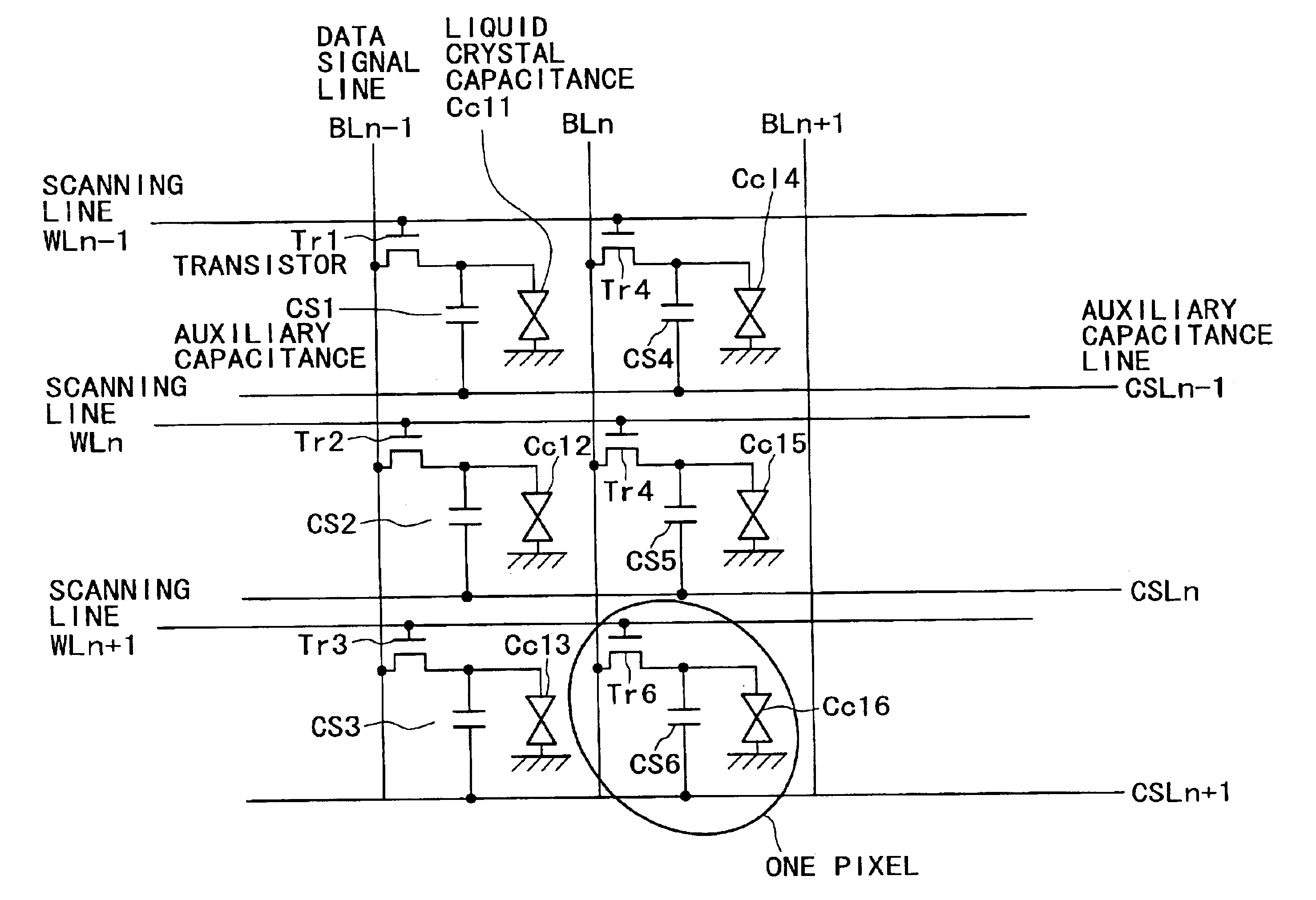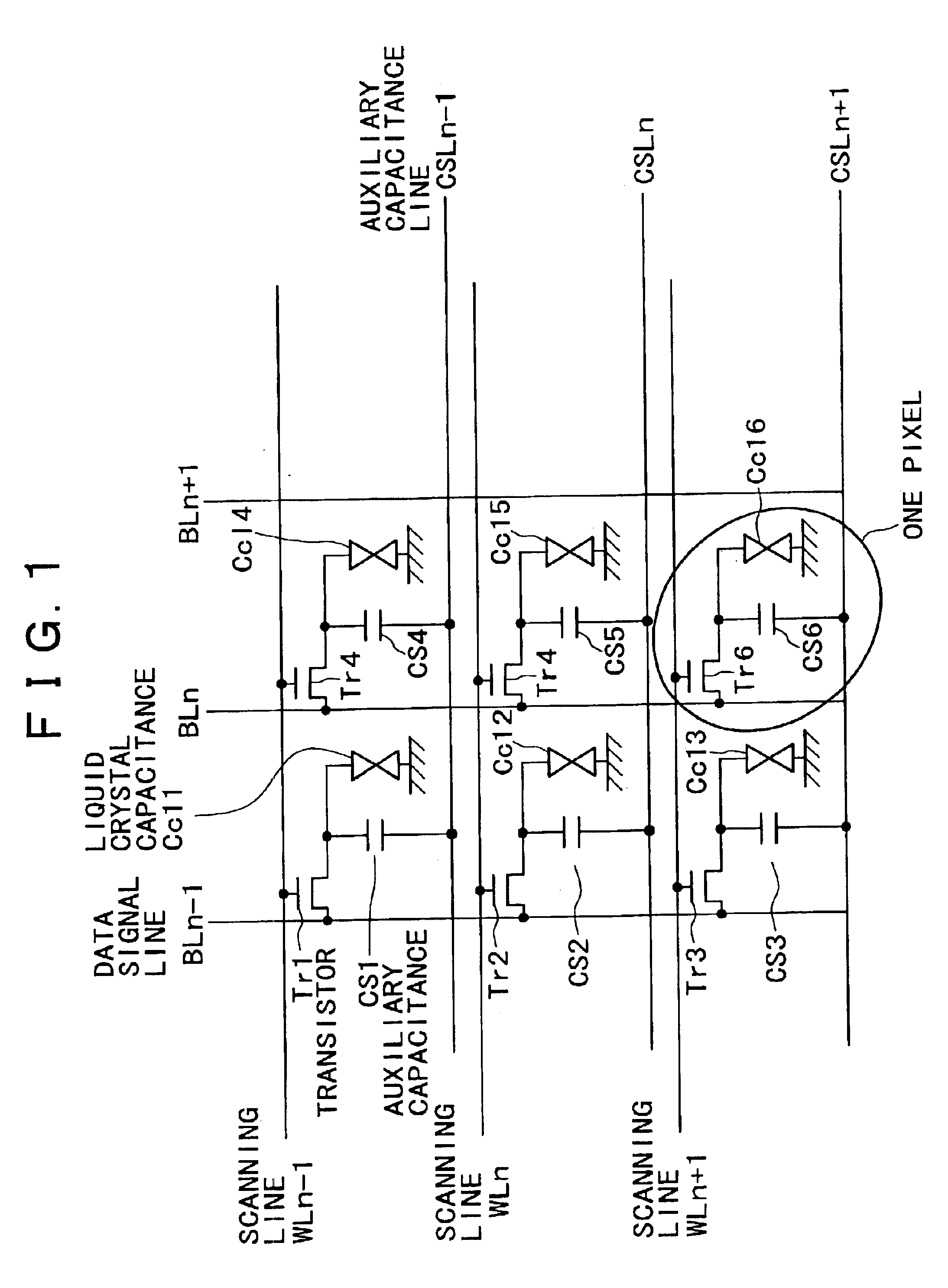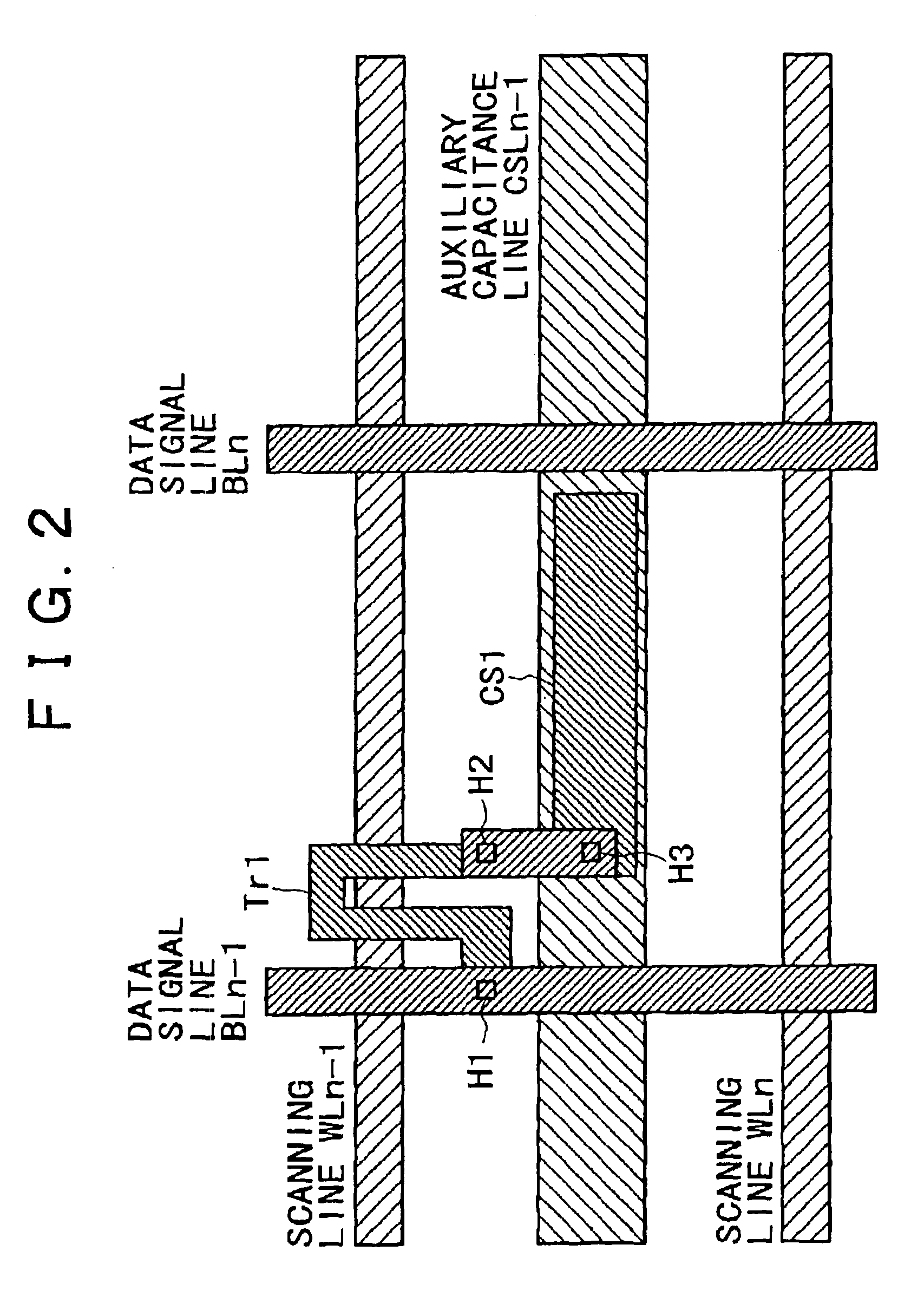Display pixel having a capacitive electrode with different conductivity type from the switching element
- Summary
- Abstract
- Description
- Claims
- Application Information
AI Technical Summary
Benefits of technology
Problems solved by technology
Method used
Image
Examples
first embodiment
[0102]FIGS. 10A and 10B are diagrams showing an equivalent circuit and a configuration of a liquid crystal display device according to a first embodiment. The circuit arrangement diagram of FIG. 10A is similar to that of the conventional example shown in FIG. 3A. However, in FIG. 10A, a conduction type of semiconductor film possessed by auxiliary capacitances PCS1, PCS2, PCS4, and PCS5 is different from a conduction type of transistors NTr1, NTr2, NTr4, and NTr5. In this example, the transistors NTr1, NTr2, NTr4, and NTr5 are formed by an N-channel TFT, and the auxiliary MOS capacitances are formed by a P-type MOS structure. That is, the auxiliary MOS capacitances are formed by a scanning line (metal), a gate insulating film, and a P-type semiconductor film.
[0103]The conduction types may be changed to form the transistors by a P-channel type TFT and the auxiliary capacitances by an N-type MOS structure.
[0104]FIG. 10A shows an equivalent circuit of 2×2 pixels. A plurality of scanning...
second embodiment
[0143]In a second embodiment, another example of configuration of the liquid crystal display device according to the present invention will be shown.
[0144]FIG. 16 and FIG. 17 are a plan view and a schematic sectional view of the configuration of the liquid crystal display device according to the second embodiment.
[0145]The liquid crystal display device shown in FIG. 16 and FIG. 17 are basically of the same configuration as shown in FIG. 10B and FIG. 11. Therefore repeated description in the second embodiment will be omitted where appropriate, and in FIG. 16 and FIG. 17, the same references are used for the same components as in FIG. 10B and FIG. 11.
[0146]There is a difference between FIG. 16 and FIG. 10B, and between FIG. 17 and FIG. 11 in that the contact holes H2 and H3 shown in FIG. 10B for connecting the N+ type semiconductor 3 and the P+ type semiconductor 4 to each other are combined into one contact hole H4 in FIG. 16. The connecting electrode 10 shown in FIG. 11 formed by de...
third embodiment
[0148]In a third embodiment, another example of configuration of the liquid crystal display device according to the present invention will be shown.
[0149]FIG. 18 is a plan view of the configuration of the liquid crystal display device according to the third embodiment.
[0150]In FIG. 18, the same references are used for the same components as in FIG. 16 and FIG. 11.
[0151]There is a difference between FIG. 18 and FIG. 11 and FIG. 16 in that a part of an auxiliary capacitance PCS1 in FIG. 18 is disposed under a data signal line BLn−1.
[0152]In this case, a region required for forming the necessary auxiliary capacitance is formed in a region where light does not pass through originally, for example a metal region (data signal line in this case). Therefore a loss in transmittance becomes smaller, and thus a high aperture ratio can be secured.
[0153]Either of a bottom gate type transistor structure and a top gate type transistor structure may be formed in this case.
[0154]When the auxiliary c...
PUM
 Login to View More
Login to View More Abstract
Description
Claims
Application Information
 Login to View More
Login to View More - R&D
- Intellectual Property
- Life Sciences
- Materials
- Tech Scout
- Unparalleled Data Quality
- Higher Quality Content
- 60% Fewer Hallucinations
Browse by: Latest US Patents, China's latest patents, Technical Efficacy Thesaurus, Application Domain, Technology Topic, Popular Technical Reports.
© 2025 PatSnap. All rights reserved.Legal|Privacy policy|Modern Slavery Act Transparency Statement|Sitemap|About US| Contact US: help@patsnap.com



